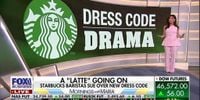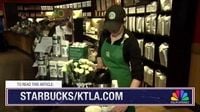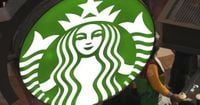Starbucks, the world’s largest coffee chain, is facing a wave of legal action from its employees across three states over a new dress code that workers say is costing them out of pocket—and, crucially, without reimbursement. According to reports from The Associated Press, Fox Business, and other major outlets, class-action lawsuits were filed on September 17, 2025, in Illinois and Colorado. Meanwhile, workers in California have lodged complaints with the state’s Labor and Workforce Development Agency, threatening similar legal action if the agency does not impose penalties against the company.
The controversy centers on a dress code Starbucks rolled out in May 2025 as part of its “Back to Starbucks” initiative. The changes require all North American employees to wear a solid black shirt—either short or long-sleeved—under their iconic green aprons. The shirts must cover both the midriff and armpits, though collars are optional. Bottoms must be khaki, black, or blue denim without patterns or frayed hems, or a solid black dress that falls no more than four inches above the knee. Shoes are also regulated: they must be black, gray, dark blue, brown, tan, or white, and made from waterproof material. Socks and hosiery, Starbucks says, should be “subdued.” Additional restrictions ban face tattoos, more than one facial piercing, tongue piercings, and what the company calls “theatrical makeup.”
Starbucks did attempt to soften the blow: as part of the rollout, it provided each employee with two company-branded T-shirts that meet the new specifications, free of charge. However, employees say this gesture falls far short of covering the actual costs required to comply with the policy. Many workers have had to buy additional clothing and shoes, sometimes at significant personal expense.
Brooke Allen, a full-time student and Starbucks barista in Davis, California, told The Associated Press that, in July, her manager informed her that the Crocs she wore to work no longer met the new dress code. Allen says she “had to go to three stores to find a compliant pair that cost her $60.09.” She has since spent another $86.95 on black shirts and jeans to meet the policy’s requirements. “I think it’s extremely tone deaf on the company’s part to expect their employees to completely redesign their wardrobe without any compensation,” Allen said. “A lot of us are already living paycheck to paycheck.” Allen also lamented the loss of self-expression, recalling that the previous dress code allowed for colorful shirts and multiple facial piercings. “It looks sad now that everyone is wearing black,” she added.
The shift to a stricter dress code marks a departure from Starbucks’ previous, more relaxed policy. In 2016, the company began allowing employees to wear patterned shirts in a variety of colors, giving workers more latitude for self-expression. The older rules, according to the Colorado lawsuit, were also loosely enforced. Now, employees who show up out of compliance are not allowed to start their shifts, raising the stakes for those who may not have the means to buy new wardrobes on short notice.
The legal complaints allege that Starbucks is violating state laws that require employers to reimburse workers for expenses that primarily benefit the company. In Colorado, the lawsuit notes, state law also prohibits employers from imposing expenses on workers without their written consent. Multiple plaintiffs, including Allen, say they asked for reimbursement for clothing and accessory costs but were denied. Another employee, Gilbert Cruz of Aurora, Illinois, requested $10 for the cost of removing a nose piercing to comply with the policy.
Starbucks, for its part, has defended the new policy and its broader employment practices. In a statement, the company said, “As part of this change, and to ensure our partners were prepared, partners received two shirts at no cost.” Starbucks also emphasized its commitment to employee well-being, stating, “We’re committed to continuing to be the best job in retail. Hourly partners earn an average of $30/hour in pay and benefits, including free college, comprehensive healthcare, and up to 18 weeks of paid family leave for part-time work.” The company added, “The facts show Back to Starbucks is making the experience better for both customers and partners,” and pointed to record-low turnover rates and high employee satisfaction.
Yet, for many workers, the issue isn’t about pay or benefits, but about fairness and legal compliance. The lawsuits seek damages on behalf of all Starbucks workers in Illinois, Colorado, and potentially California—not just those who are unionized. According to The Independent, these legal actions represent a shift in strategy for Starbucks Workers United, the union that has successfully organized 640 of the company’s 10,000 U.S. stores. The union has already filed hundreds of unfair labor practice charges with the National Labor Relations Board (NLRB). However, the board’s ability to hear cases has been hampered by a lack of quorum after a board member was dismissed earlier this year, leaving workers with fewer federal avenues for redress and pushing them toward state courts.
The stakes are high for Starbucks, not just in terms of legal liability but also public perception. The company has long marketed itself as a progressive employer, offering benefits like free college tuition, comprehensive healthcare, and paid family leave—even for part-time workers. The new dress code, however, has sparked accusations of insensitivity, especially as many employees say they are already struggling to make ends meet.
Some observers see the dress code controversy as emblematic of broader tensions between large employers and their hourly workers, especially in a post-pandemic economy where labor shortages and unionization drives have become more common. For Starbucks, which has weathered multiple labor disputes in recent years, the outcome of these lawsuits could set a precedent for how workplace expenses are handled—not just in coffee shops, but across the retail sector.
As the legal battles unfold, Starbucks continues to stand by its policy, arguing that a more uniform look helps create “a welcoming coffeehouse where people gather and where we serve the finest coffee, handcrafted by our skilled baristas.” Whether the courts will agree that the cost of that uniformity should fall on workers remains to be seen.
For now, the company’s baristas are left weighing the cost of compliance against the promise of a “more consistent coffeehouse experience”—and, perhaps, the hope that their voices in court will lead to change.


